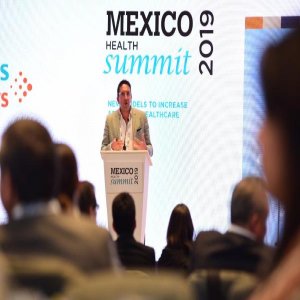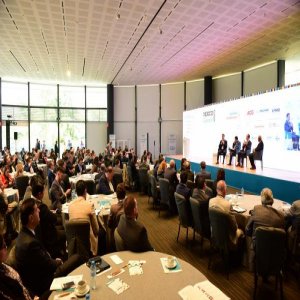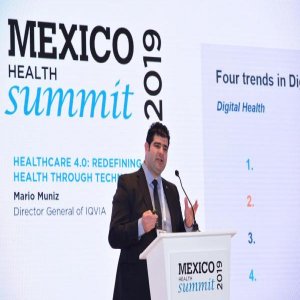
Collaboration a Vital Step in Prevention Strategy
The impact of healthcare on a country’s economic development is undeniable. Yet, Mexico’s health model is still focused on a corrective rather than a preventive approach, said Sandra Sánchez-Oldenhage, Director General of PharmAdvice and moderator of the Prevention and Education to Improve Health panel at Mexico Health Summit 2019, held on Thursday at Papalote Museo del Niño in Mexico City.
“Mexico invests 5.8 percent of its GDP in health when the average of the OECD is 9 percent. Meanwhile, absenteeism related to health issues has a significant impact on manufacturing activities and revenue generation. Only in the automotive industry, productivity and results are hit by a 7.3 percent reduction,” said Sánchez-Oldenhage.
Prevention can save lives, according to Miguel Salazar, Member of the Board at AMIIF. However, it is normally seen as an added burden. “Just like with innovation, patients tend to see prevention as an added cost related to gyms or different eating habits. In reality, prevention is much more than that. A clinical test can improve a patient’s quality of life if used at an early stage,” he said.
Mario Sicilia, Director General of Laboratorio Médico Polanco, highlighted that to move from a model that cures sick people to one that targets patients before they get sick, the main need is information. “Clinical data is generated each day but it is not used. We know people are going to get diabetes and yet, no one is doing anything about it,” he said.
Change will not be possible from the public or private sector alone. Collaboration is needed from both sides to ensure access to medical care and to push for preventive strategies. To boost penetration of prevention schemes, however, “the different players in the sector need to justify the economic benefits of early disease detection,” said Sicilia.
New business models will also be needed to maximize resource and infrastructure use. “In terms of resources, we need to recognize that Mexico does not invest enough in healthcare. Yet, investment in health is one of the best projects a country can undertake,” said Rodrigo Puga, President and Country Manager of Pfizer Mexico. César Carrasco, Country General Manager of Philips Mexico, said companies are gradually opening their business to democratize access to prevention schemes, with some of them destining their infrastructure and equipment to night-time tests to offer competitive costs without compromising normal activities. “Companies are also developing remote systems to take advantage of underutilized infrastructure during downtimes,” said Carrasco.
There are already communication channels to foster collaboration between the government and the private health sector. What the industry lacks is clarity in how to implement the best strategies to improve the sector, according to Salazar. Nevertheless, all panelists agreed that President Andrés Manuel López Obrador’s willingness to invest in prevention is something that should be celebrated. “As an industry, we need to find ways to collaborate in this goal,” said Puga. “At the pharmaceutical level, companies have a mandate toward prevention.”
Puga highlighted vaccination programs and the work that both private and public organizations are doing toward preventing teenage pregnancy as key elements where industry and government can collaborate toward prevention. “Vaccines are the most important prevention intervention,” he said. Meanwhile, Salazar pointed at initiatives like Cumbia Camaleón as ways in which the industry can collaborate to create awareness. “Prevention campaigns can be another type of vaccine,” he said.
















